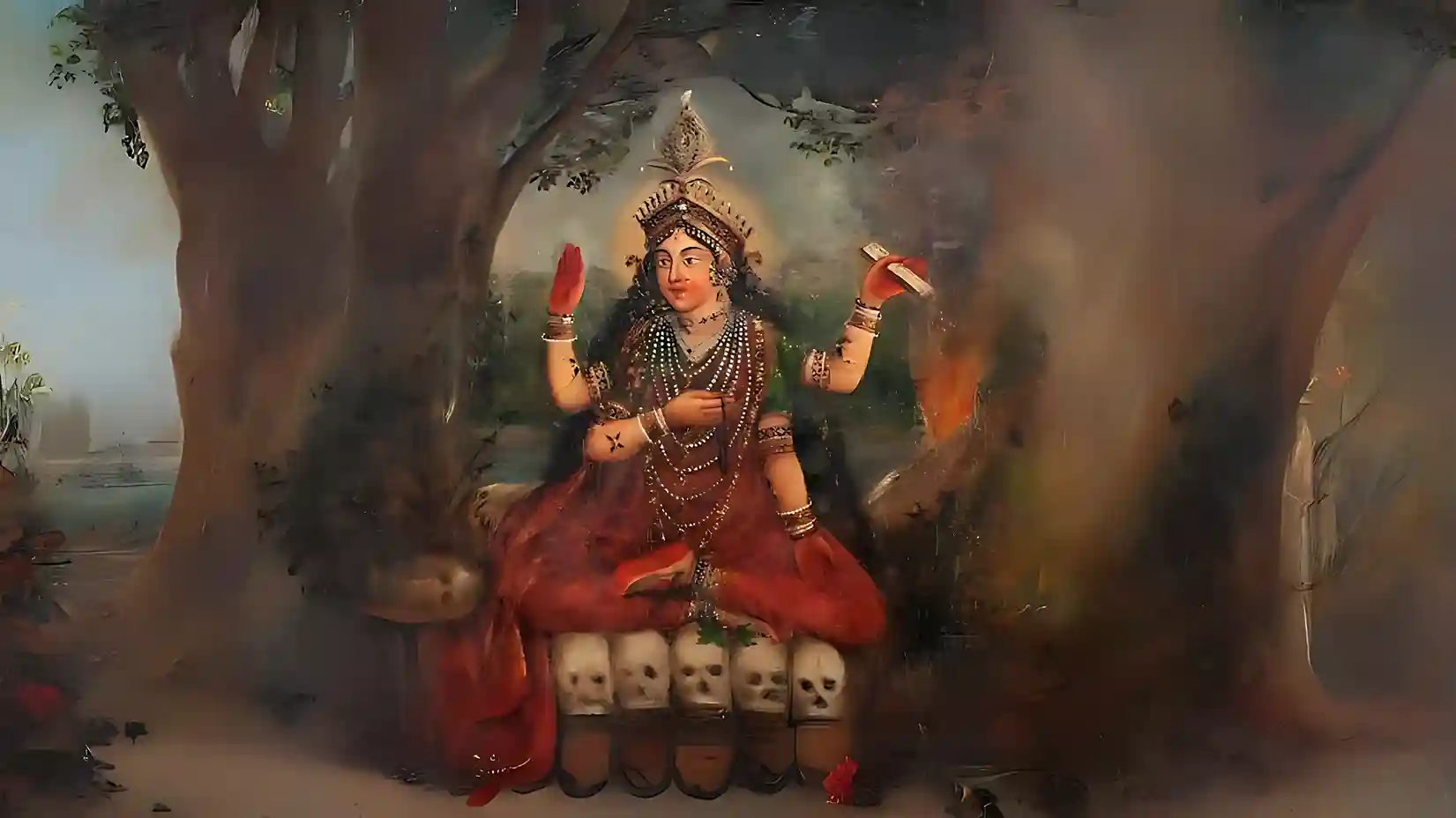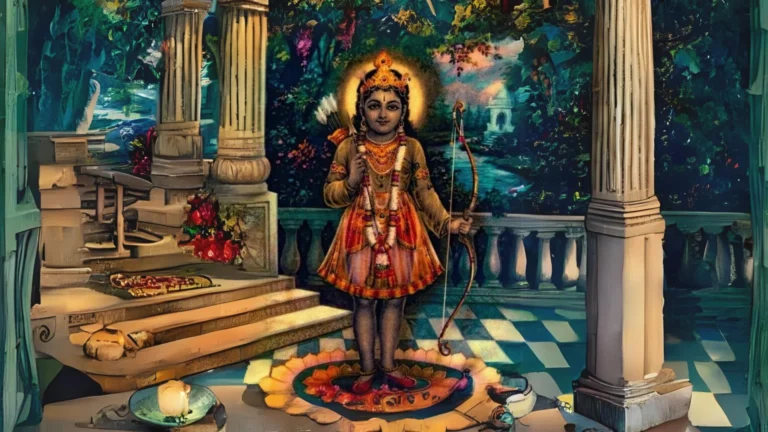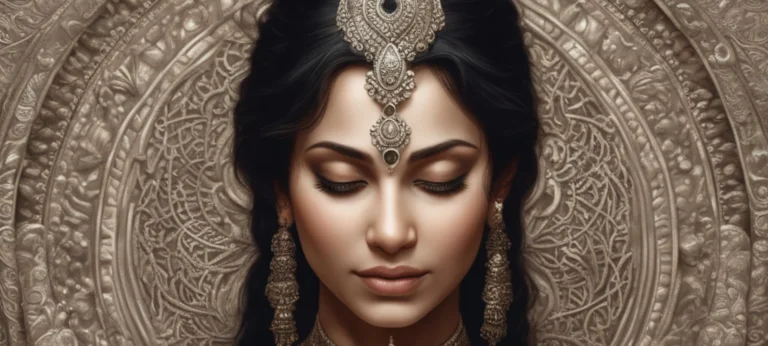Table of Contents
Who is Bhairavi Devi?
Today our topic of discussion is the fifth Mahavidya, known as Bhairavi. Bhairavi Devi is the one who vibrates fear and awe in the three worlds. The name Bhairavi comes from the Sanskrit root word ‘Bhay’ which means fear. We associate her with death and decay. All that is gory, negative, and fearsome comes from the universe of Bhairavi Devi.
Bhairavi Devi is one of the most desired Mahavidyas, or cosmic knowledge, on attaining which the tendency to be fearful dies away. She has her devotees who can lay down their lives for her. We often compare Bhairavi Devi to Chandi, the fierce manifestation of Durga, hailed in the Durga Saptashati.
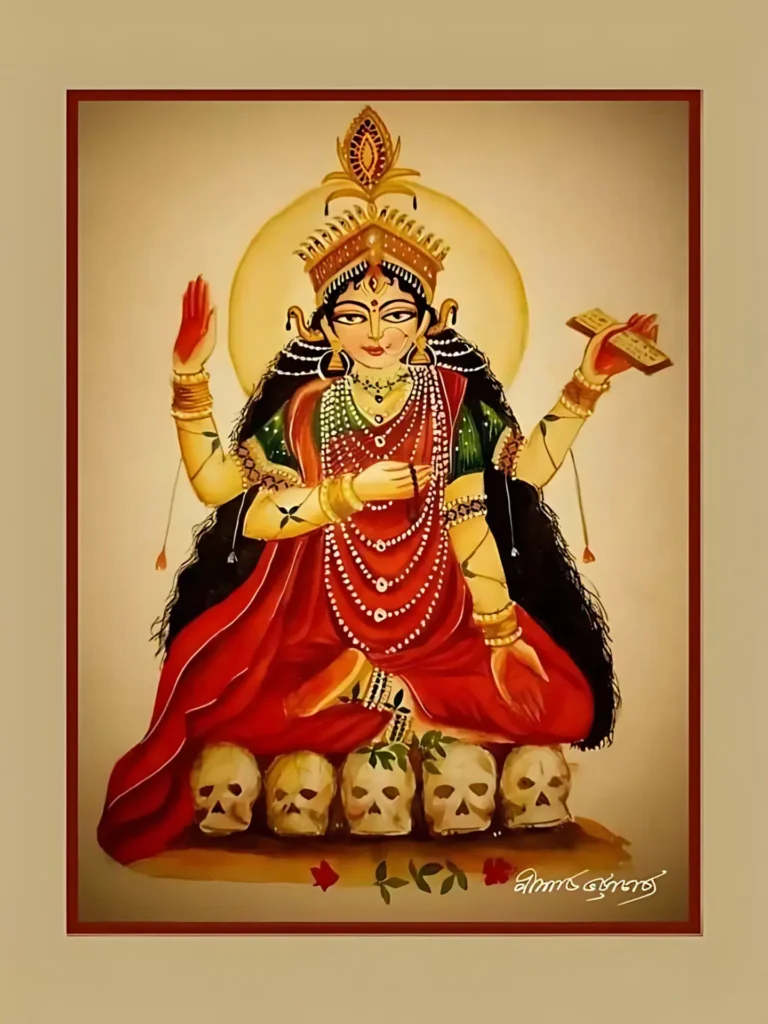
Also called Shubankari, the doer of auspicious deeds, she always works for the betterment of her devotees.
Description of Bhairavi Devi
We can identify the nature of the Mahavidya through her physical attributes. The presence of severed heads, cremation ground, and a naked sword makes Bhairavi Devi a Soumya-Ugra Mahavidya, which means she has both soothing and terrible aspects. The goddess has a fiery red complexion and wears a red saree.
Her male counterpart is Bhairava, similar in characteristics but an expansion of Lord Shiva. In one of her fierce portrayals, she is nude, sitting on a headless corpse. A deadly Bhairava sits in front of her, his tongue and fangs resembling those of a snake. She holds terrible paraphernalia in her hand, and her expression can induce fear in the hearts of the bravest.
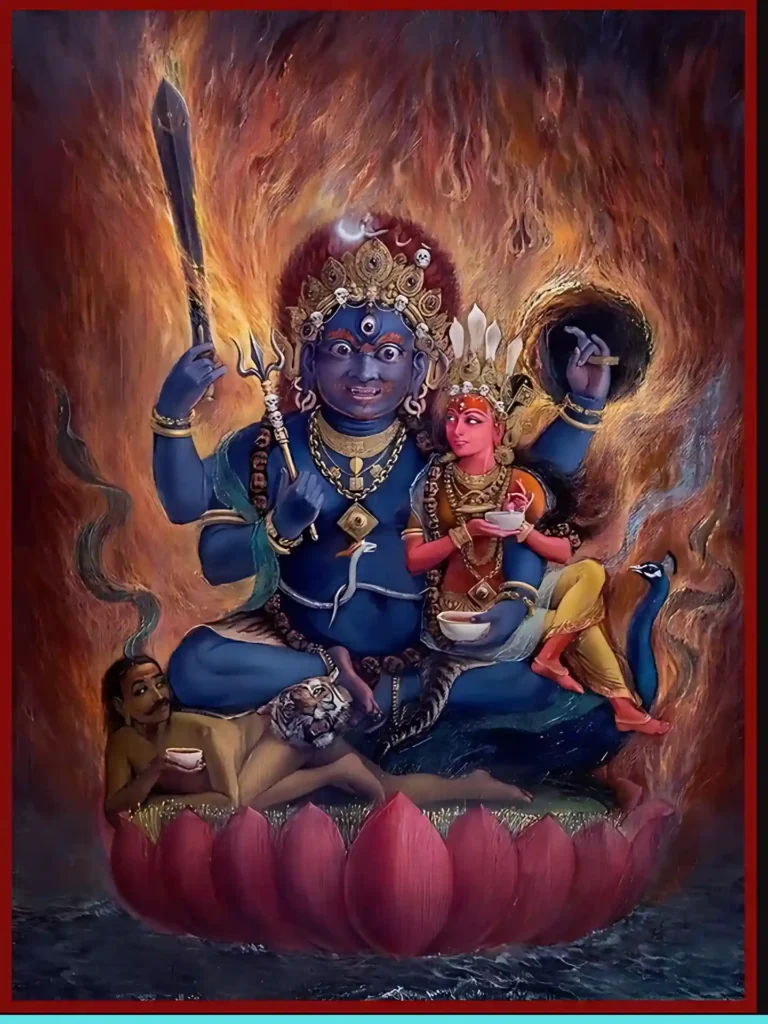
She sits on the cremation ground amidst burning corpses and scavengers. As a mark of her intense dispassion, she wraps her body with skulls. There is another softer form of the goddess, yet not very Satvik. In this manifestation, she sits on a lotus, holding a book and rosary.
Her two other hands display Abhaya and Varada Mudra granting benedictions and refuge to her devotees. Yet she wears a garland of skulls, granting mystical knowledge and the power of speech to those who please her.
7/8 Questions from Sanatana Dharma
The scores generated in this Quiz may or may not be absolute. There may be right or wrong answers to each Question. A percentage towards 100 indicates that you are more aligned to the overall subject matter.
Powers of Bhairavi Devi
Bhairvai Sadhana grants siddhis, mastery over occult forces, victory over enemies, freedom from nightmares, etc. Hence, one cannot worship her casually. In astrological terms, she governs the eighth house of uncertainties, primarily revolving around enemies, debts, death, luck, and accidents.

Both negative and positive pathways can lead us to enlightenment, but they must be extreme. Through the dark path of Bhairvai Sadhana, one can attain self-realisation. There is no doubt about it.
The Nature of Goddess Bhairavi
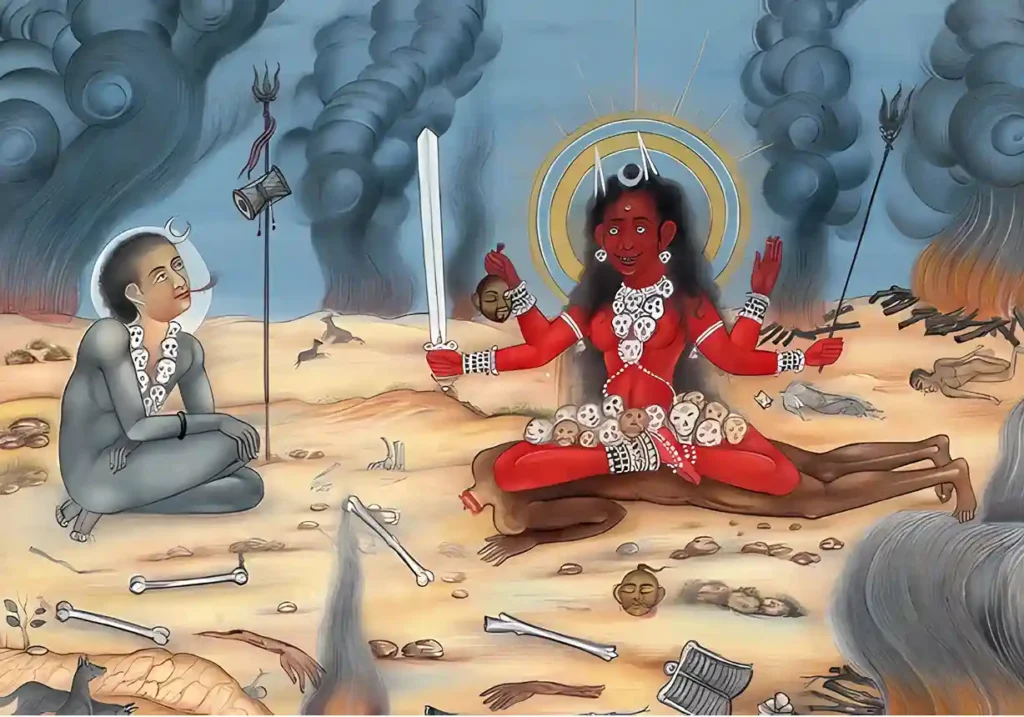
The Tantric texts describe her as a loving mother towards her noble children and as terrible to the sinful ones. As she represents the negative forces, her energies are dark and intense. Ma Bhairavi holds a distinct face for herself and another for her devotees. Well aware of the impermanence of life, she sits among corpses and adorns the ashes of the cremation ground.
But she does not impose her personal views on her devotees and instead grants them their desired boons quickly.
Like a self-satisfied mother, she enchants her children with toys of sense-enjoyment but prefers to stay aloof from the glamours of the world. Only the mature and spiritually advanced Sadhaka can understand her heart.
Can I worship Bhairavi Devi at home?
Through sadhana, we are asking the goddess to reveal herself to us. As soon as the goddess enters our vicinity, she makes her presence felt by altering our moods, events, and situations.
Hence, the surroundings must be conducive to handling the goddess’s energy. Her presence undoubtedly affects other aspects of our lives if we have a careless approach to the Sadhana.
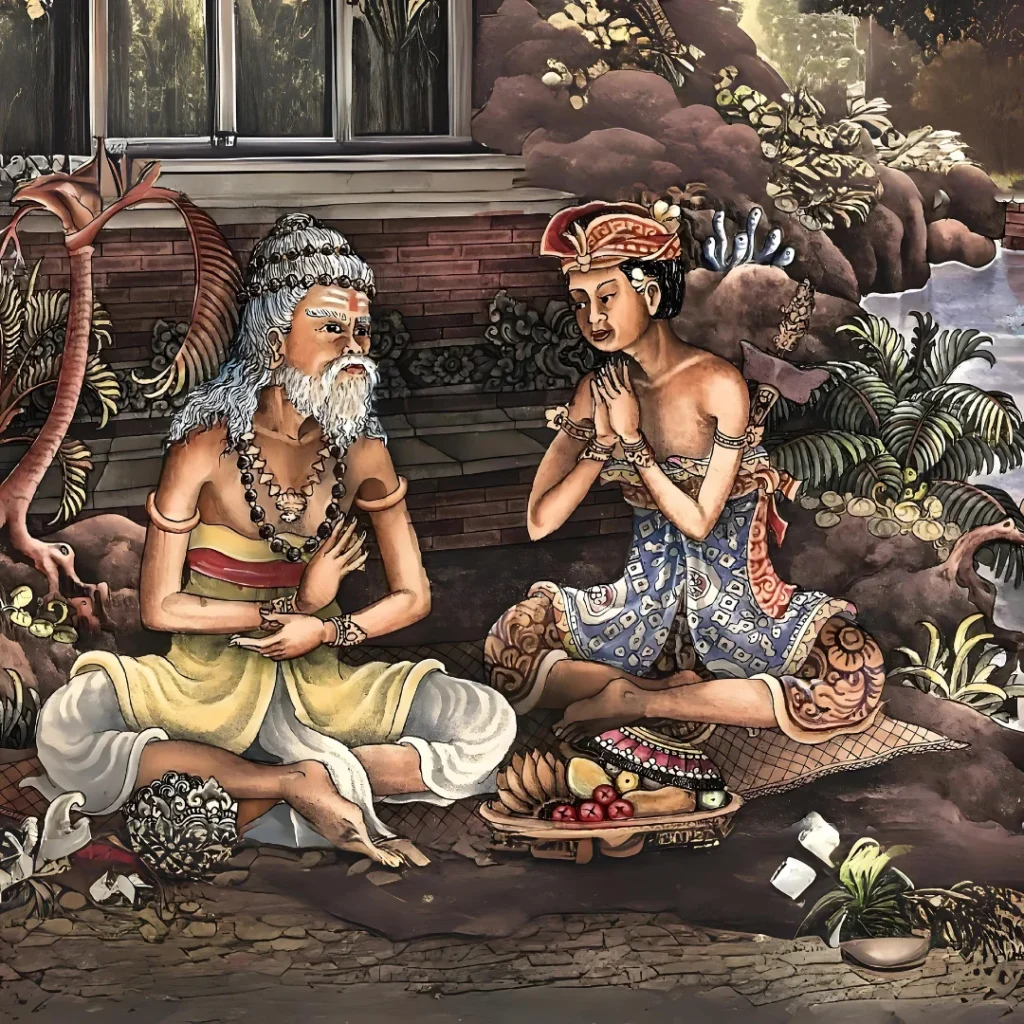
Just as kindling fire at home spreads heat and light, Devi Bhairavi leaves her mark on one’s family, making the house atmosphere grim and serious. Hence, I suggest doing Bhairavi Sadhana under an able Tantric Guru who will enlighten the Sadhaka on the nuances. The sadhana may induce depressive moods if one takes it up unmonitored.
Bhairavi Sadhana
Note that one must worship Bhairavi, Chinnamasta, and Dhumavati through the Vamachari Process, away from home, under the guidance of a self-realised Tantra guru.
There can be no Satvik worship for Bhairavi Devi. For Bhairavi Sadhana, Tantra practitioners employ the Pancha Makaras, or five practices that begin with the letter M.
What are Pancha Makaras?
The Pancha Makaras are:
Madya- Wine
Mansa- Meat
Matsya- Fish
Mudra: parched grain
Maithun: sexual intercourse.
These Pancha Makaras are compulsory parts of any Tantric ritual; however, Tantrics see them differently depending on the branch to which they belong. Some Tantra practitioners did not resonate with these practices and drifted away from the normal school. Thus, there were two branches in the Tantra: the left-handed Vamachari and the right-handed Dakshinachara Tantra.
The Vamacharis, or left-handed practitioners, take the Pancha Makaras in the literal sense by adopting these five in their lifestyle. They carry out their practice in seclusion, typically on cremation grounds, hidden from the eyes of society.
They consume and offer meat, wine, and fish. Though mudra means parched grain, it refers to the consumption of drugs to experience heightened states of ecstasy. This form of Tantra, however, is rare to see nowadays.
They engage in sexual intercourse by employing lust as a tool to reach divinity. Although effective, very few succeed through the path of Vamachara, as it is a path full of pitfalls. Most sadhakas succumb to the vices and get addicted to sin during Sadhana, straying away from their original pursuit.
However, the right-handed Tantrics found these practices abominable and, hence, adopted the esoteric symbolism of the Pancha Makaras. Their interpretation explains the entire science of Kundalini yoga.
For them Madya means the ambrosia that drips from the pineal gland to the tip of the tongue, unlike wine in Vamachara. Mansa is swallowing one’s tongue, as opposed to meat.
Matsya here means twin fish, represented by the Ida and Pingala Nadis. Mudra refers to the hand and body gestures that lead to the awakening of the Kundalini. Finally, Maithuna is the ultimate stage when Shakti unites with Shiva, resulting in inexplicable bliss.
You display your love by reading this valuable material. So kindly read and consider financially supporting us to keep our efforts going with renewed vigor! Supporters in India can donate via Razorpay while those abroad can use PayPal!
